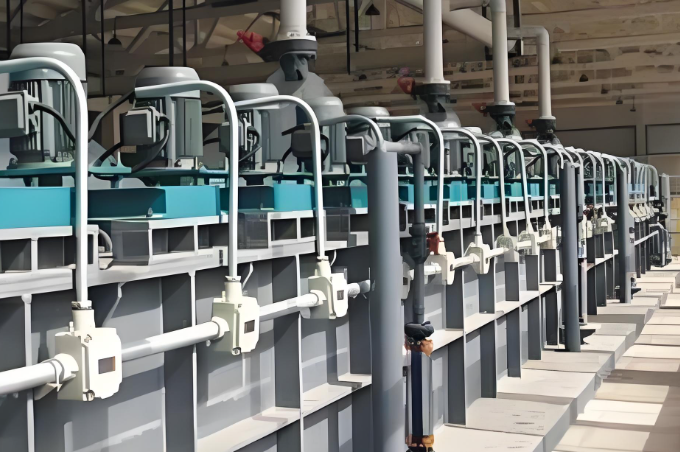NEWS&EVENTS
Home > News&Events > Company news > The core principle of extracting and separating precious metals (such as gold, platinum, palladium)
The extraction and separation of precious metals (gold, platinum, palladium, etc.) is based on the difference in solubility of ions in the organic phase and the aqueous phase, and is achieved through chemical complexation or ion exchange. As an extraction equipment manufacturer, it is necessary to analyze the technology implementation logic from three aspects: equipment design, process parameter optimization and anti-interference ability.

1. Key role of extraction equipment
Efficient mixing and phase separation: The centrifugal extractor rotates at high speed to generate centrifugal force, and phase separation is completed within 10-30 seconds. The aspect ratio design avoids emulsification and ensures that the precious metal complex is quickly transferred to the organic phase.
2. Multi-stage countercurrent extraction tank: The traditional box-type extraction tank uses multi-stage countercurrent contact to increase the concentration of precious metals. For example, a copper-nickel mine project uses P507 extractant, and 6-stage countercurrent extraction makes the cobalt-nickel separation efficiency reach 99.5%, balancing the extraction rate and processing volume.
2. Precise control of process parameters
1. H value regulation: Precious metal extraction is sensitive to pH. The extraction rate of gold is the highest at pH=1-2, and platinum requires pH=2-3. The equipment needs to be equipped with online pH monitoring and automatic acid addition system to ensure that the fluctuation range is ≤±0.2. 2. Temperature and coexisting ion management: High temperature increases the solubility of the extractant, but it is necessary to prevent the hydrolysis of precious metals. For coexisting ions, interference can be reduced by pretreatment or selective strong extractants.
3. Equipment anti-interference design
For the third phase generation, optimize the drum material and surface treatment process to reduce metal ion adsorption; configure an anti-emulsification device to shorten the phase separation time. The equipment has an IP67 sealing level, is resistant to corrosion by strong acids and organic solvents, and ensures continuous operation without leakage.
As an extraction equipment manufacturer, through modular design, intelligent control and material innovation, the precious metal recovery rate is stabilized at more than 98%, and the unit processing cost is reduced by 40%. In the future, the equipment structure will continue to be optimized to meet the needs of green extraction of low-grade ores.